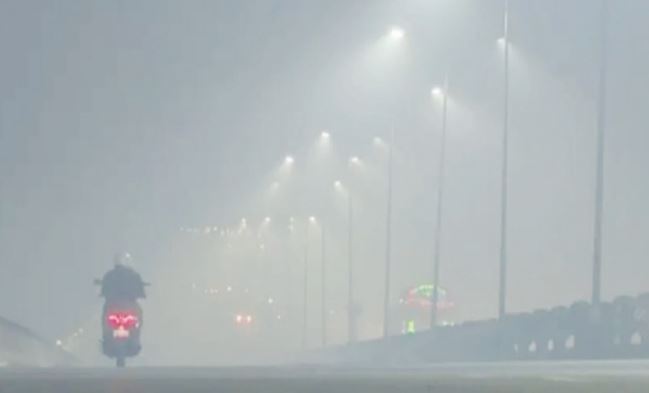Bhubaneswar: Even as air pollution is choking New Delhi, Odisha’s capital Bhubaneswar is also witnessing a drastic decline in air quality after the Diwali celebrations on Sunday. Though the Supreme Court imposed restrictions on the use of firecrackers this year and the Twin City Commissionerate Police issued guidelines regarding green firecrackers, all efforts to curb pollution seem to have gone for a toss. Before Diwali, the average daily Air Quality Index (AQI) and PM2.5 and PM10 levels in Bhubaneswar were within the moderate range. In April 2023, the AQI in Bhubaneswar was 80, but it jumped to 142 on Sunday. In Bhubaneswar, the AQI was in the range of 103 to 130 between November 1 and 4. The PM10 (particles with a diameter of 10 micrometres or less) stood at 145mg/m3 at Chandrasekharpur on November 1, 104 mg/m3 at the monitoring station of OSPCB at Unit VIII on November 2, and 140 mg/m3 at Khandagiri and 101 mg/m3 at Palasuni on November 3. It was found to be 124 mg/m3 and 121 mg/m3 on November 4 at the Capital police station area and IRC village respectively. The level of PM2.5, another major pollutant in the air, was also said to be poor in parts of the city on November 7. However, the AQI has dropped drastically after Sunday evening, primarily owing to the random use of firecrackers violating all rules. Although there are no large industrial establishments in Bhubaneswar, construction activities along with the regular movement of heavy goods on National Highway-16 massively contribute to the deteriorating air quality in the city. The Odisha State Pollution Control Board (OSPCB) further stated that temperature inversion, especially during the winter months, further prevent the rise and dispersal of pollutants from the lower layers of the atmosphere with PM10 pollutant remaining suspended in the air for nearly six hours and PM2.5 for even a longer period. While the coarse particles can irritate your eyes, nose, and throat, the fine particles can get into the deep parts of your lungs, causing cough and asthma attacks, or even into your blood, the Centre for Disease Control and Prevention said.
Exclusive
Breaking News
 Odisha Crime Branch arrests 3 Directors of 2 Fintech companies for Cyber Fraud
Odisha Crime Branch arrests 3 Directors of 2 Fintech companies for Cyber Fraud
 AstraZeneca withdraws Covid-19 vaccine globally, months after admitting rare side effects
AstraZeneca withdraws Covid-19 vaccine globally, months after admitting rare side effects
 India – New Zealand joint trade committee acknowledges in both economies
India – New Zealand joint trade committee acknowledges in both economies
 PM Gears Up for Bengal Blitz with Public Meetings in Key Constituencies On May 3
PM Gears Up for Bengal Blitz with Public Meetings in Key Constituencies On May 3
 Docs Warn Gym Goers as Sudden Heart Attacks Return, Killing at least 4
Docs Warn Gym Goers as Sudden Heart Attacks Return, Killing at least 4






More Stories
Payment System for Net Banking to be Launched: RBI Chief
Adani Group to invest Rs 75,000 crore in MP, Pranav Adani sees for growth
Women empowerment in focus launched in Agriculture Odisha 2024